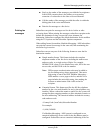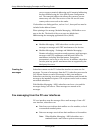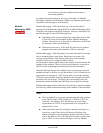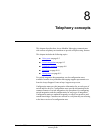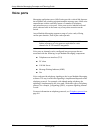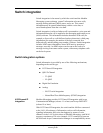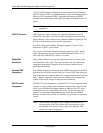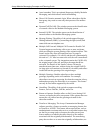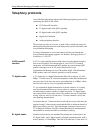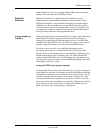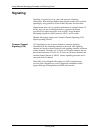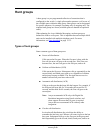
Telephony concepts
November 2004
Avaya Modular Messaging Concepts and
Planning Guide
8-5
Integration features
Configuration notes provide integration information for several types of
switches. These configuration notes also provide information on the
integration features that a particular switch integration supports.
Integration features include:
! System Forward to Personal Greeting: The switch controls the
call transfer conditions when the following occur:
— All Calls: All calls are directly transferred to the voice
messaging system, regardless of the status of the subscriber
extension. This feature can be configured on the switch.
— Ring No Answer: The subscriber extension rings, but no one
answers the call. The switch transfers the call to the voice
messaging system after a certain number of rings. The
number of rings is four by default, but can be configured on
the switch.
— Busy: The subscriber extension is busy. The switch transfers
the call to the voice messaging system on detecting the busy
signal.
— Busy/No Answer: Certain switches have multiple
appearances of the same telephone number on a single
telephone set. Each appearance of the number can function
as a separate "line", meaning each appearance can carry a
separate conversation. With such switches, Busy/No Answer
features means that the switch transfers the call to the voice
messaging system on detecting a busy signal. The telephone
rings on the second or third line appearance, but because the
switch detected a busy signal during the first line appearance,
the call is treated as busy.
! Station Forward to Personal Greeting: The subscriber controls the
call transfer conditions when the following occur:
— All Calls
— Ring No Answer
—Busy
— Busy/No Answer
Note: These features work in a similar manner as when the
switch controls the forwarding conditions, except
that these features can be configured by subscribers
on their telephone sets.



